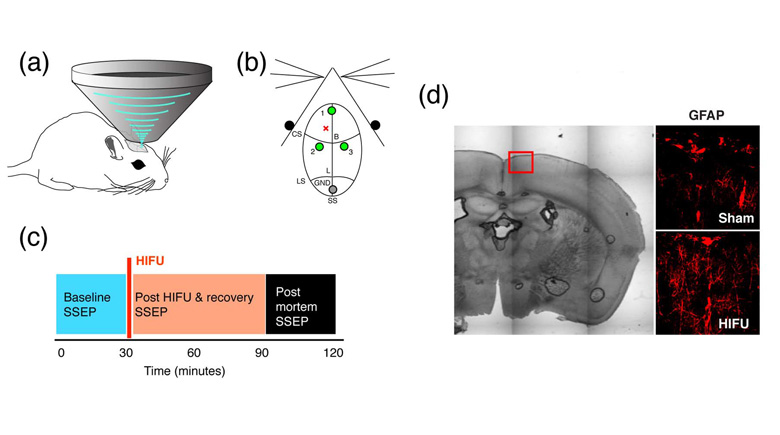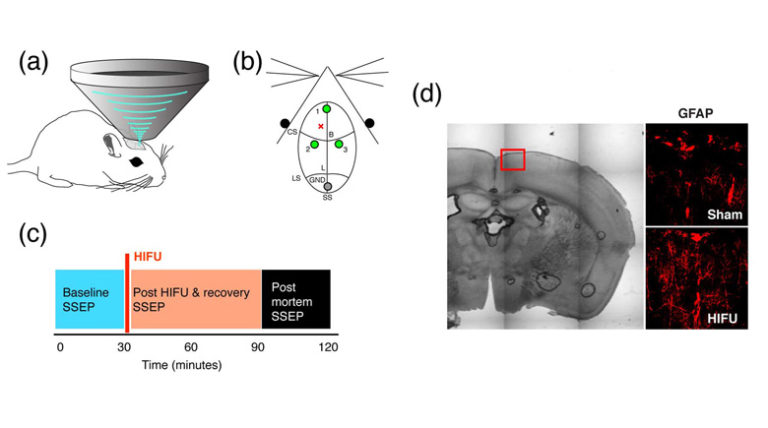
Rapid detection and diagnosis of a traumatic brain injury (TBI) can significantly improve the prognosis for recovery. Helmet-mounted sensors that detect impact severity based on measurements of acceleration or pressure show promise for aiding triage and transport decisions in active, field environments such as professional sports or military combat. The detected signals, however, report on the mechanics of an impact rather than directly indicating the presence and severity of an injury. We explored the use of cortical somatosensory evoked electroencephalographic potentials (SSEPs) to detect and track, in real-time, neural electrophysiological abnormalities within the first hour following head injury in an animal model. To study the immediate electrophysiological effects of injury in vivo, we developed an experimental paradigm involving focused ultrasound that permits continuous, real-time measurements and minimizes mechanical artifact. Injury was associated with a dramatic reduction of amplitude over the damaged hemisphere directly after the injury. The amplitude systematically improved over time but remained significantly decreased at one hour, compared with baseline. In contrast, at one hour there was a concomitant enhancement of the cortical SSEP amplitude evoked from the uninjured hemisphere. Analysis of the inter-trial electroencephalogram (EEG) also revealed significant changes in low-frequency components and an increase in EEG entropy up to 30 minutes after injury, likely reflecting altered EEG reactivity to somatosensory stimuli. Injury-induced alterations in SSEPs were also observed using noninvasive epidermal electrodes, demonstrating viability of practical implementation. These results suggest cortical SSEPs recorded at just a few locations by head-mounted sensors and associated multiparametric analyses could potentially be used to rapidly detect and monitor brain injury in settings that normally present significant levels of mechanical and electrical noise.

